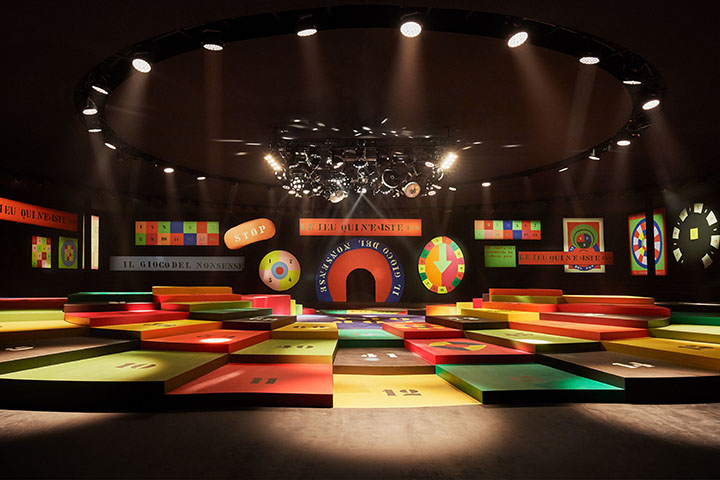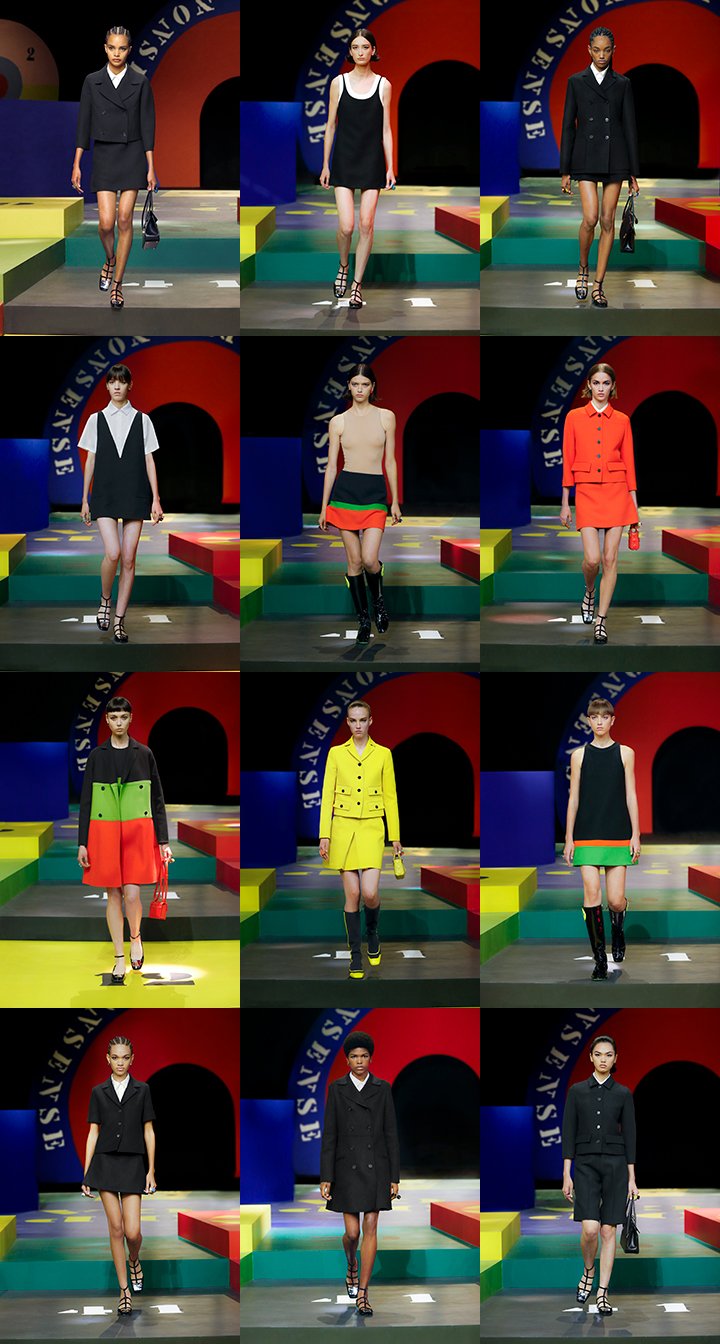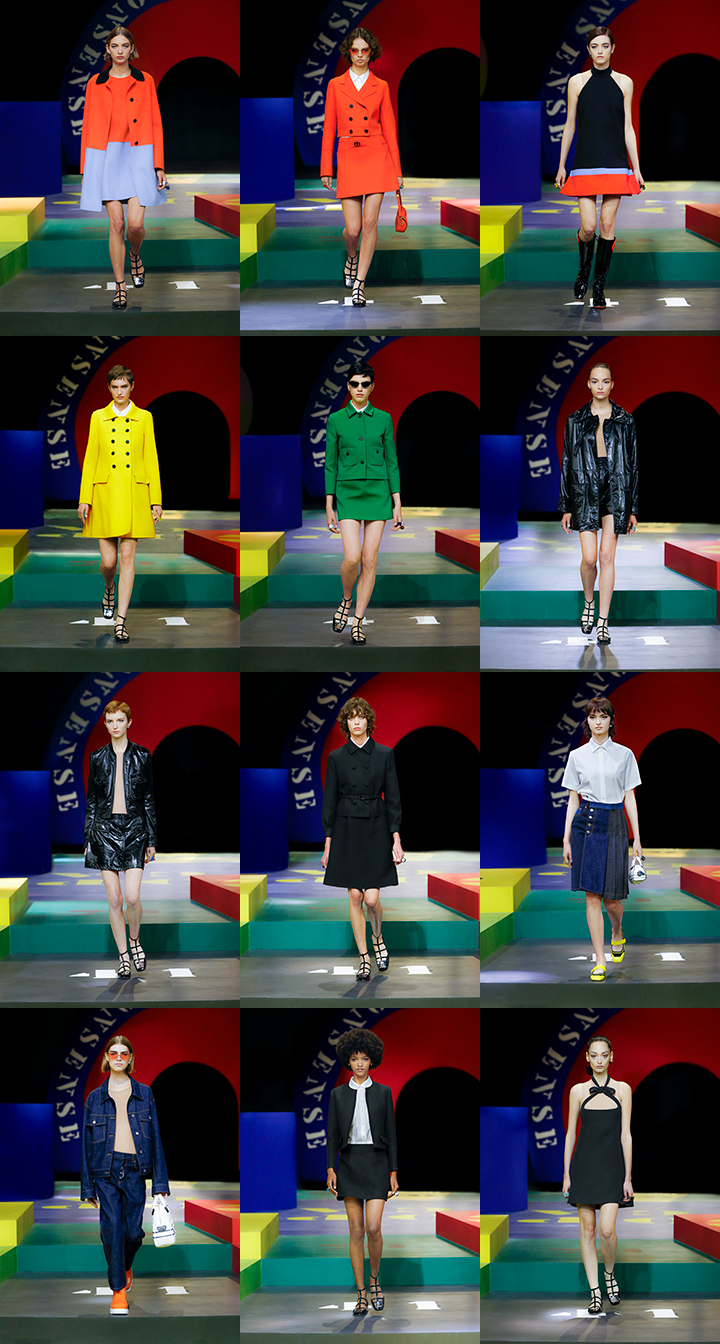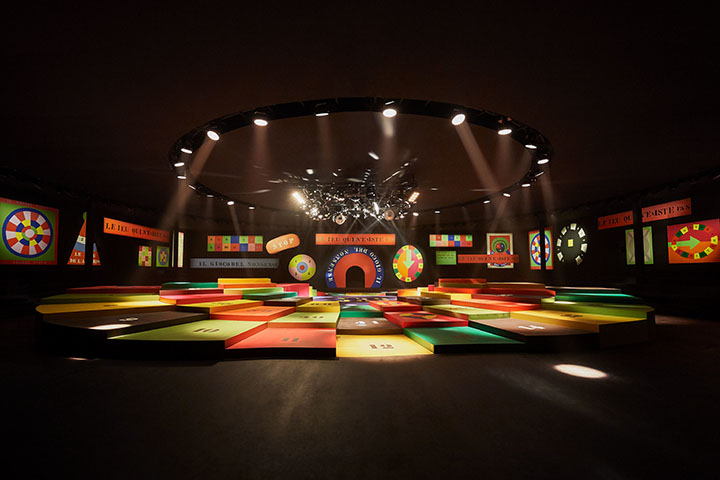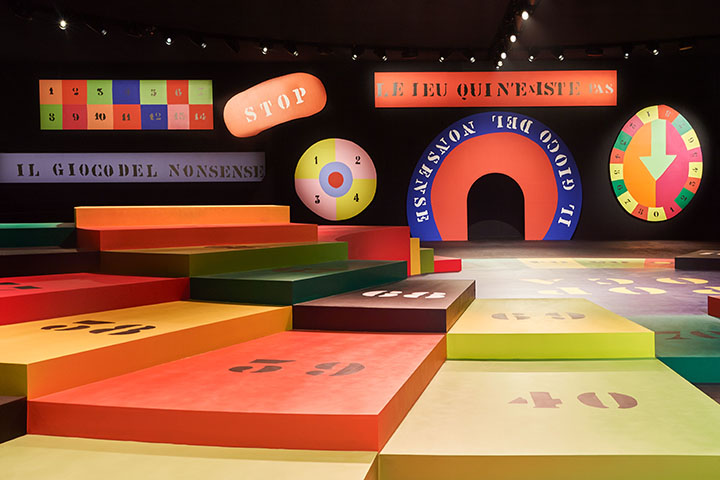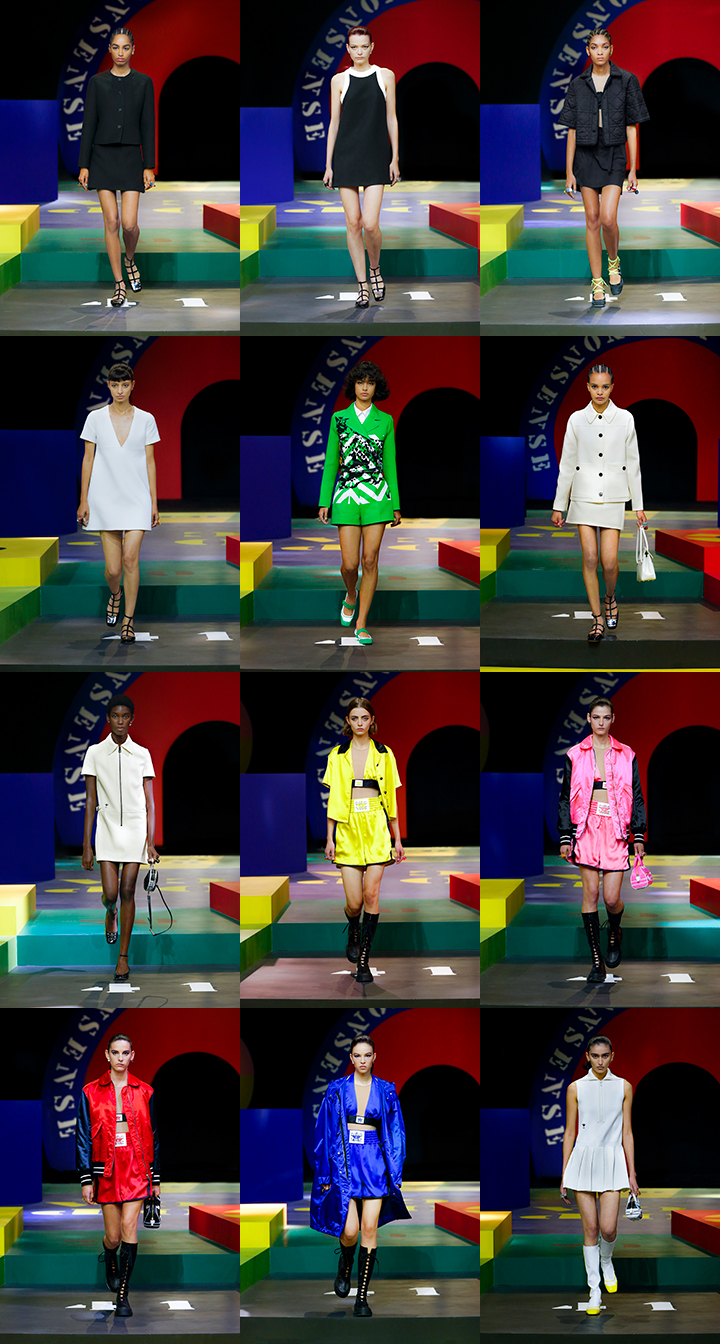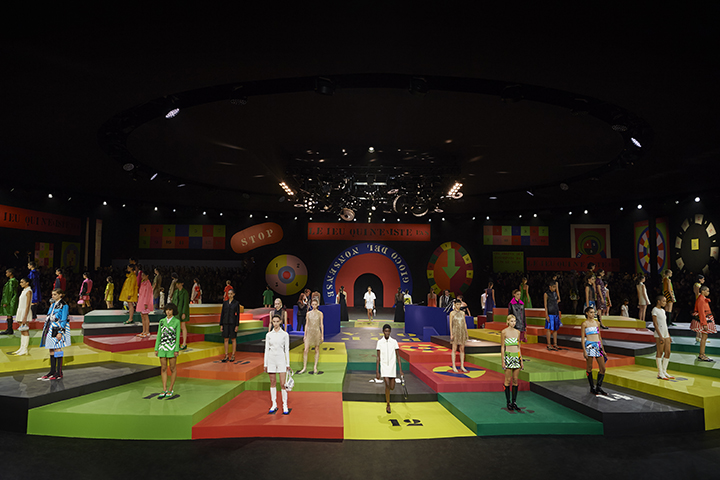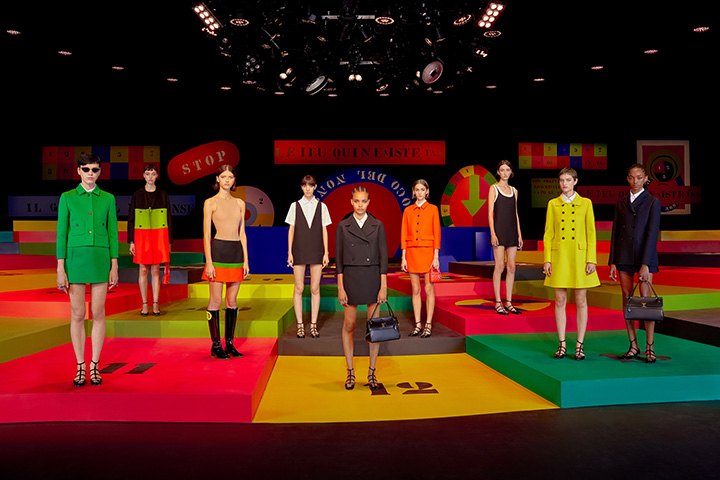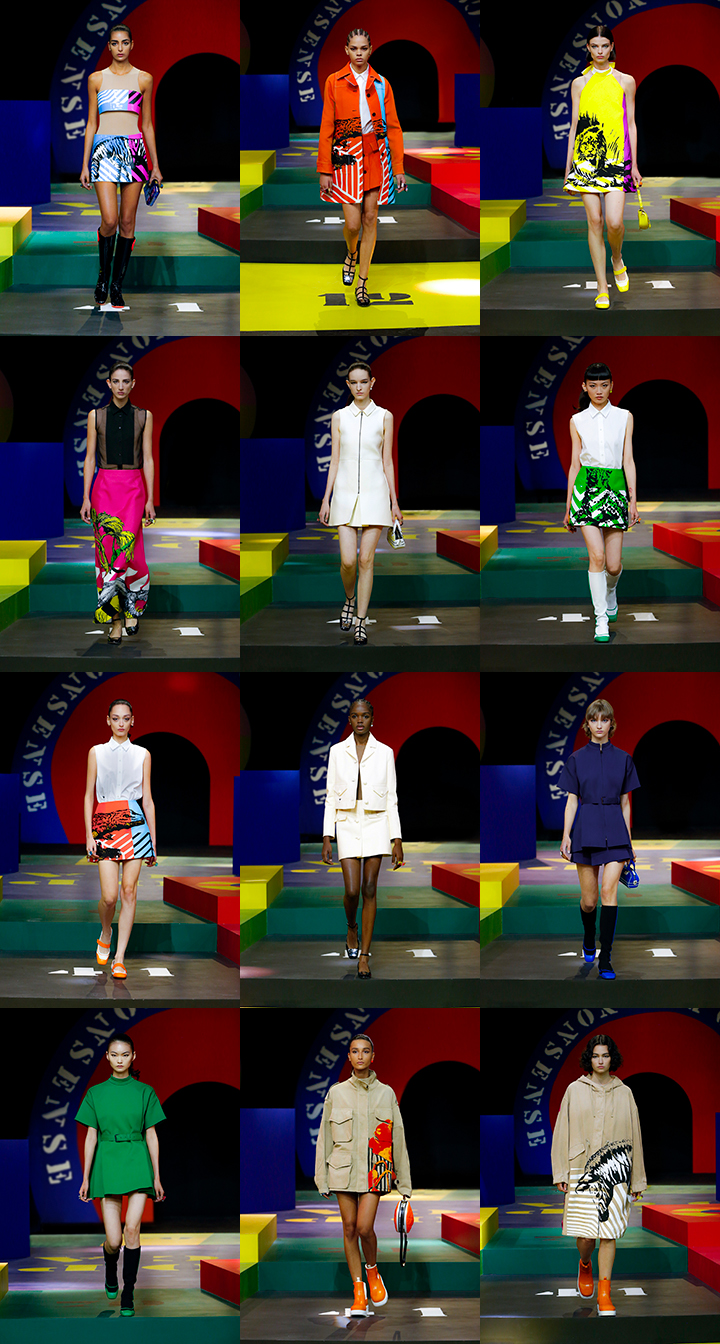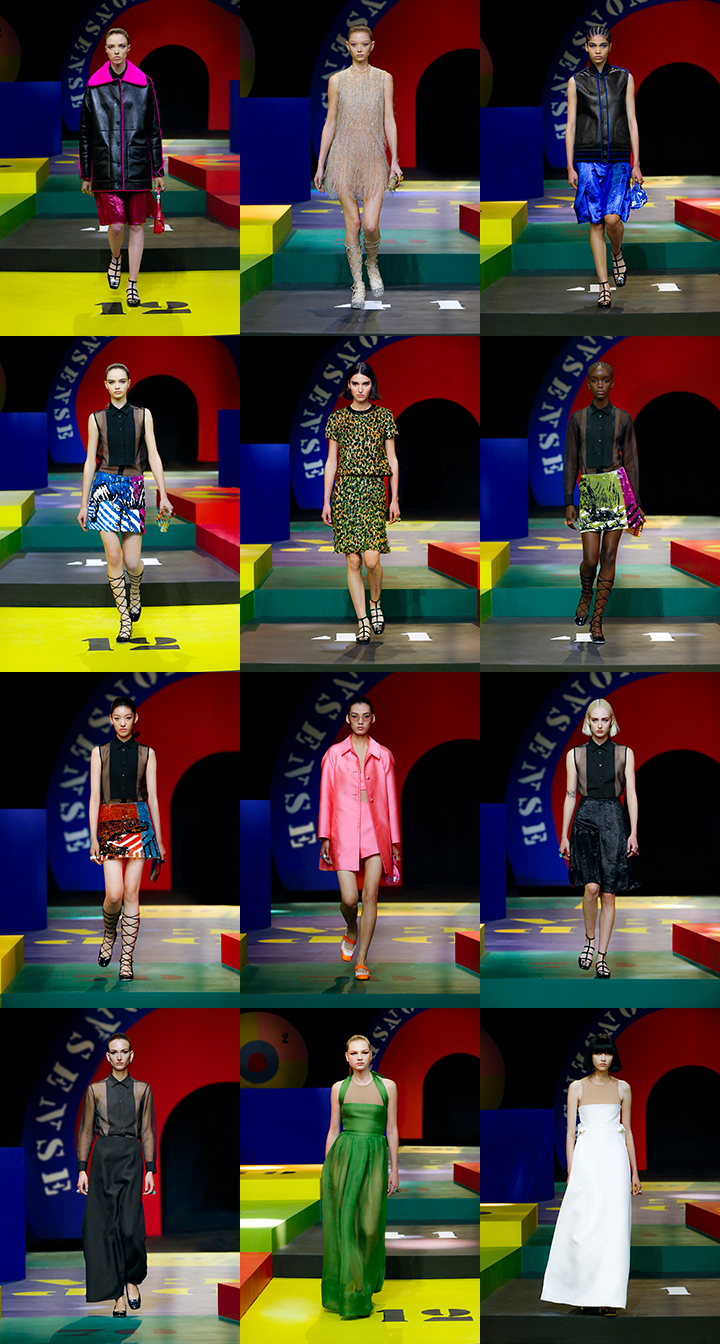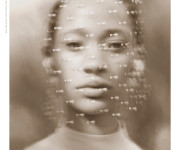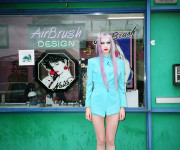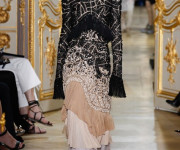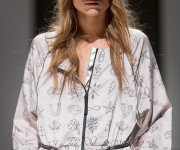Maria Grazia Chiuri thus revisits the early 1960s, etching out the contours of change and formulating a new lexicon for a world still reeling from the pandemic. Silhouettes also reveal cuts and graphic effects transposed in yellow, green, red, navy, orange, and raspberry, giving Bohan’s aesthetic a colour block spin. These colours also symbolize the spatial geometries at the heart of games dreamt up by artist Anna Paparatti to question the rules of art and life. Inspired by her singular style, Maria Grazia Chiuri approached her to conceive the show’s scenography in an absurdist spirit reflecting the universe of her various works*.
Jackets reinvented with a boxy cut, refined coats, skirts, Bermudas, shorts, and dresses are combined in multiple ways in a series of contrasts. A selection of designs produced in 30 embroideries are enhanced by a textured visual effect. Materials such as scuba and nylon reinterpret volumes, revolutionizing the look of the woman who wears them. Silhouettes conceived to shine on the dancefloor evoke the legendary Roman nightclub, the Piper Club, a sprawling, colourful venue, and an emblem of freedom. A laboratory that experimented with the arts and fashion without prejudice, offering a unique sense of creativity like Le Palace in Paris. A place where artists mingled with philosophers, muses, and actors, among others, in a completely new and unexpected setting, just like this collection, embodied by Anna Paparatti’s II Gioco del Nonsense (The Game of Nonsense). Nonsense, as the American poet and literary critic Susan Stewart writes, is a “perfect, pure, untouched surface of meaning whose every gesture is reflexive*.”
*Anna Poparatti drew inspiration from various creations themed around games, such as her work II Gioco del Nonsense.
*From Nonsense: Aspects of lntertextuality in Folklore and Literature, Johns Hopkins University Press, 1979.

